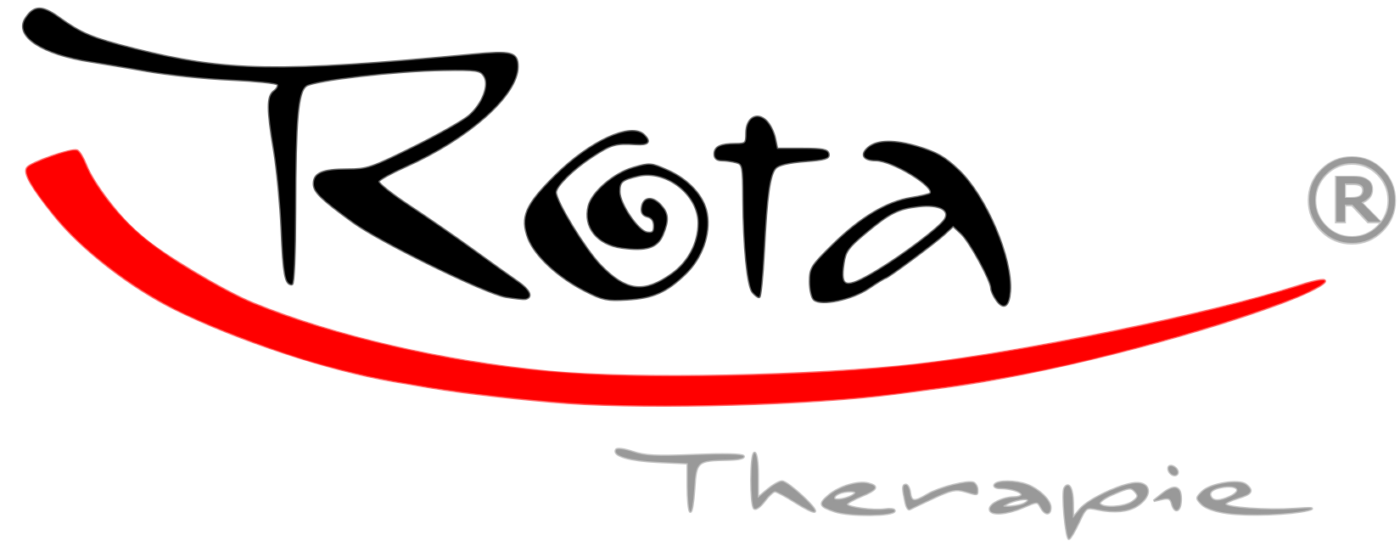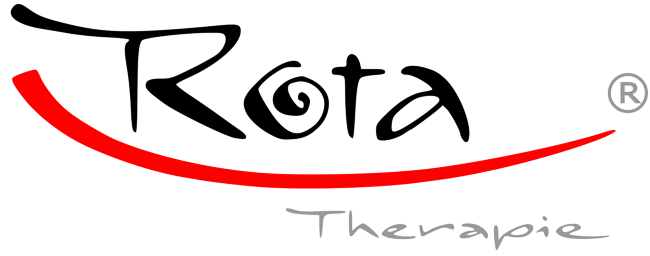Rota-Therapie – What is it?
 Rota-Therapie is a neurophysiological treatment principle that addresses the basic features of motor development. It involves moving with rotation in space and in the spine in a well-coordinated manner and without reflex patterns (whether persistent early childhood reflexes or even acquired abnormal movement patterns). The rotations affect the central tone regulation in the body, which shows up as a central issue in many abnormalities and clinical pictures. Movement exercises that are easy to learn for parents and relatives, but also for patients themselves, are used in the treatment, in infants and babies on the lap, in children and adults on the floor or, as needed, in bed or on the couch. To enable optimal uprighting against gravity, whether crawling or gait, it requires basic skills for free development of head control. These basic skills are supported prophylactically in therapy and in everyday life.
Rota-Therapie is a neurophysiological treatment principle that addresses the basic features of motor development. It involves moving with rotation in space and in the spine in a well-coordinated manner and without reflex patterns (whether persistent early childhood reflexes or even acquired abnormal movement patterns). The rotations affect the central tone regulation in the body, which shows up as a central issue in many abnormalities and clinical pictures. Movement exercises that are easy to learn for parents and relatives, but also for patients themselves, are used in the treatment, in infants and babies on the lap, in children and adults on the floor or, as needed, in bed or on the couch. To enable optimal uprighting against gravity, whether crawling or gait, it requires basic skills for free development of head control. These basic skills are supported prophylactically in therapy and in everyday life.
An Example
An example: a child has difficulty concentrating on the lesson, sits unsteadily and within a very short time has to prop up his head, or even rest his whole upper body on the table. The lines slip, it has difficulty reading or concentrating. “Sit up straight” the child hears several times a day, he makes an effort, but the effort is mainly reflected by strength, the hands have to be tensed, the toes curled and the teeth clenched, as the saying goes.
However, all this is not ideal for fine and graphomotor development, firm pencil posture and tongue entrainment are often the result.
With Rota-Therapy, the sitting situation can be adjusted so that the head does not have to be held against gravity and the child is supported in the development of stable head and trunk stability with rotation exercises. With the step back, meaning a wide support surface, and the development of good tone regulation, it is much easier to develop higher skills in learning and writing.
The three pillars
In order to provide nourishment for the brain and thus influence sensorimotor development, the program is based on 3 pillars that are individually adapted to the patient:
- Rotational exercises
- Everyday activities
- Mouth treatment
The mouth in particular, with its large representation area in the brain, plays an important role in tone regulation.
Many studies show that persistent reflexes are disturbing factors for the “normal” development in the sensomotoric (perception deficit, coordination or balance weakness,…) but also in the cognitive (learning disorders, ADHD,…) area. Also the emotional development (security, fears, demarcation problems,…) are often related to a reflex stress. If this is the case, Rota therapy offers reflex avoidance and at the same time help in further development in the mentioned areas.

